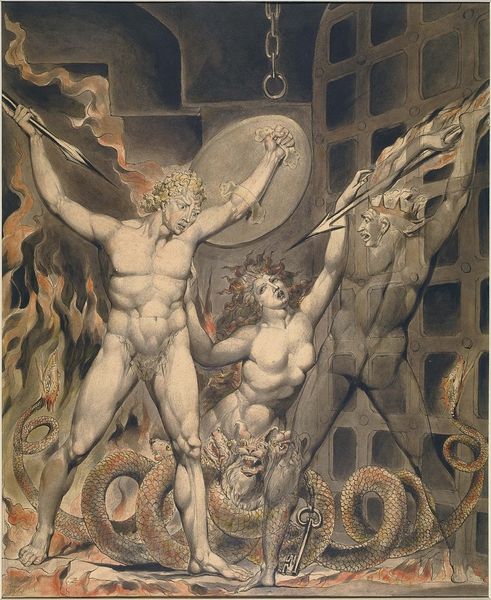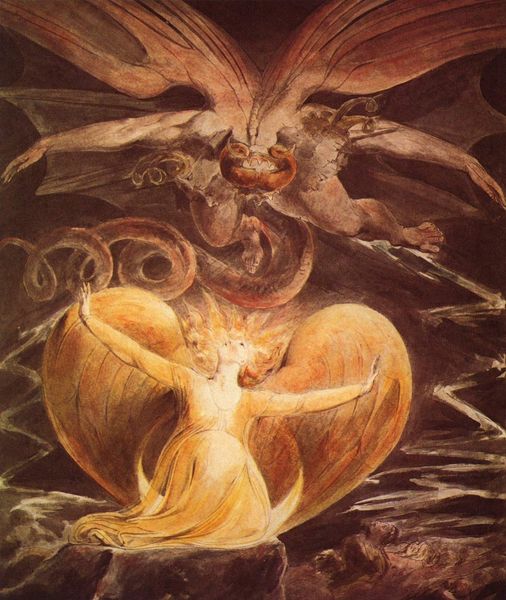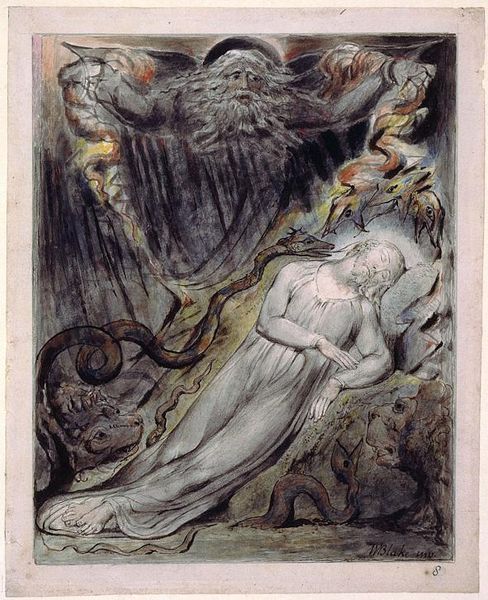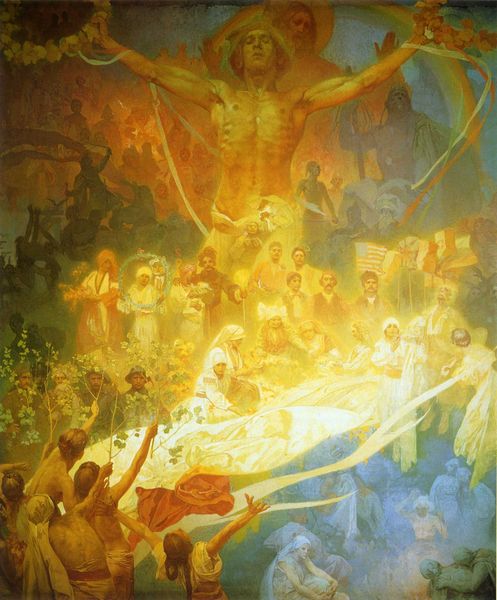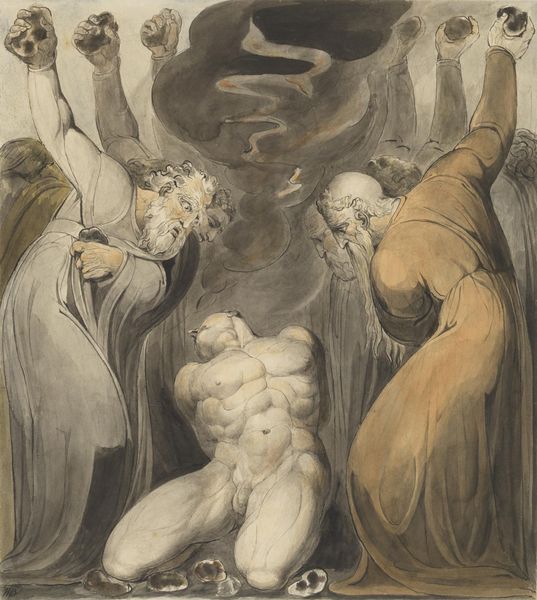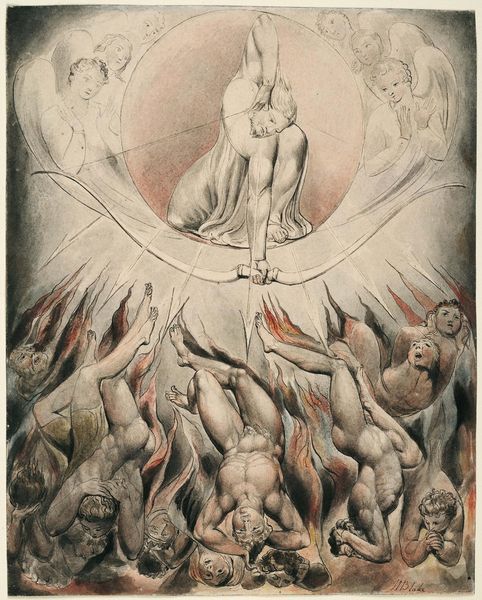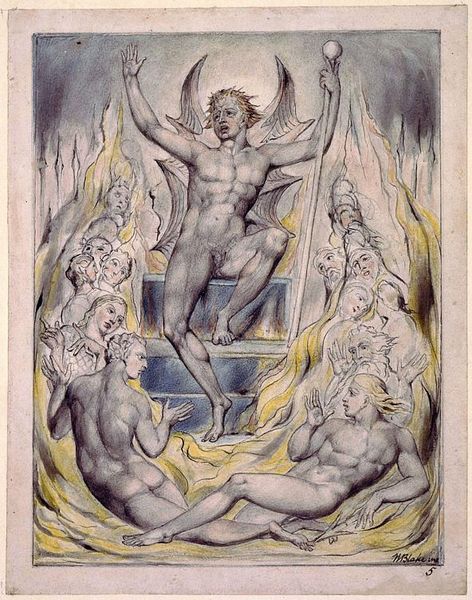
drawing, ink
#
drawing
#
allegory
#
narrative-art
#
fantasy-art
#
charcoal drawing
#
figuration
#
charcoal art
#
oil painting
#
ink
#
romanticism
#
christianity
#
mythology
#
symbolism
#
watercolor
Copyright: Public domain
Editor: This is William Blake’s “The Number of the Beast is 666,” made using ink and watercolor. It certainly has a fantastical feel to it, maybe even a bit apocalyptic. What’s immediately striking is the monstrous, almost symmetrical figure at the bottom. What's your take on it? How do you interpret this work? Art Historian: Indeed, Blake conjures quite the vision here! As an iconographer, I am drawn to the deep symbolism rooted in cultural memory. Consider the number 666, long associated with the Antichrist and ultimate evil in Christian eschatology. The monstrous figure with its doubled form embodies duality and corruption, amplified by the grotesque winged figure hovering above, carrying away innocents. It suggests societal power structures founded on corrupted institutions and corrupted leadership. Do you notice other visual clues in the watercolor itself? Editor: Now that you mention it, the subdued, almost muddy color palette enhances that feeling of decay. But, that upward pointing figure gives a contrasting signal of pointing away and upward to the angel… Art Historian: Precisely! Blake frequently used light and darkness as symbolic counterpoints, reflecting the internal struggle between good and evil. He believed that rigid dogma and institutions like the Church often distorted true spirituality, something evident here by his rendering of angelic figures bearing features in common with the central devil-figure. Think about how cultural memory shapes our understanding of such potent symbols, even today. What aspects are really affecting your experience of the piece? Editor: I think seeing symbols that I associate with demons juxtaposed with heavenly, radiant angelic ones messes with my feelings about traditional interpretations of evil… so much more nuance Art Historian: Wonderful insight. By understanding Blake’s personal mythology and artistic choices, we see how images carry emotional, cultural, and psychological weight. We can decode messages that transcend time itself, sparking new connections and deeper meaning to our cultural context today.
Comments
No comments
Be the first to comment and join the conversation on the ultimate creative platform.
